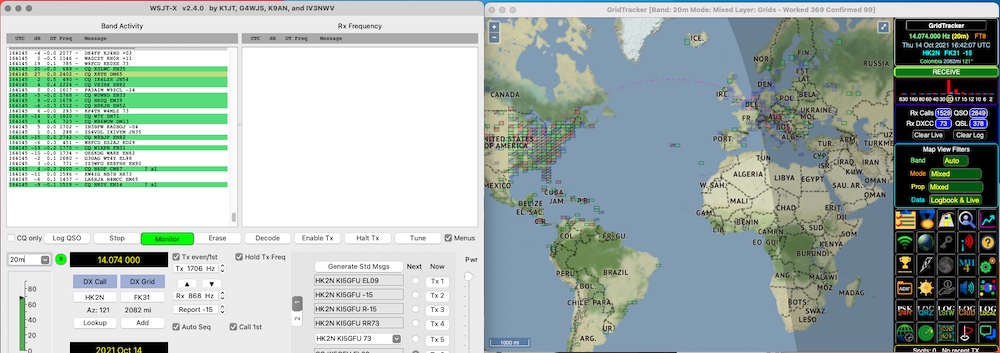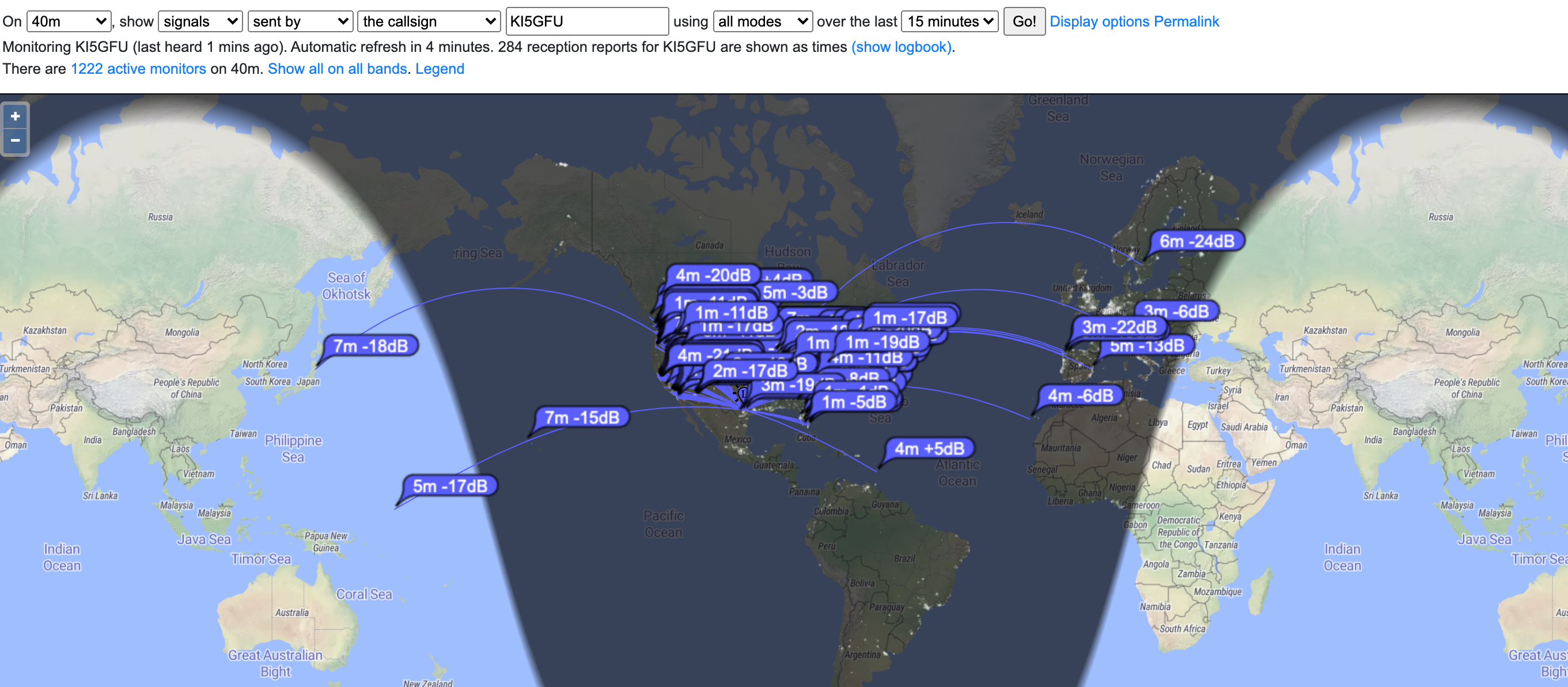
Out of the box, my FTDX-10 didn’t fully function with my existing WSJT-X setup I was using for the FT-991. Using some other videos as my guide, I’m re-configurating settings so they play nice with each other.
FTDX-10 SETTINGS:
FTDX-10 mode – set to DATA-U (data upper sideband):

Set the Attenuator, Preamp, Roof filter and AGC.

Changed the factory ‘REAR SELECT’, ‘RPORT GAIN’ and ‘RPTT SELECT’

Changed settings for ‘LCUT FREQ’, ‘LCUT SLOPE’, ‘HCUT FREQ’ and ‘DATA SHIFT (SSB)’ from factory as suggested by YTuber… he thought the default settings compromised signal quality, so I started with the same settings;


WSJT-X SETTINGS:
Opening the Settings dialog.
- Set radio to ‘FTDX-10‘
- Set serial port to your ‘Enhanced’ virtual port, mine is cu.SLAB_USBtoURAT
- Set the baud rate to match the CAT Baud rate you set in FTDX-10 settings for me: 38400
- Data Bits: Eight
- Stop Bits: Two
- Handshake: None (this was Hardware for my FT-991)
- Force Control Lines: DTR: High RTS: High
- PTT Method: CAT (this was RTS for my FT-991)
- Mode: Data/Pkt (this was USB for my FT-991)
- Split Operation: None (this was Rig for my FT-991 — I’ll probably set back to ‘Rig’ later)

Under the Audio settings… you’ll want to locate and select your USB Audio CODEC. This varies by platform.. this is on an older MacBook Pro with the Silicon Labs (SLAB) drivers installed.

Conclusion
These settings worked for me to get operational with WSJT-X on the FTDX-10.
digitial, FT8, ftdx-10, how-to, wsjt-x setup, yaesu

